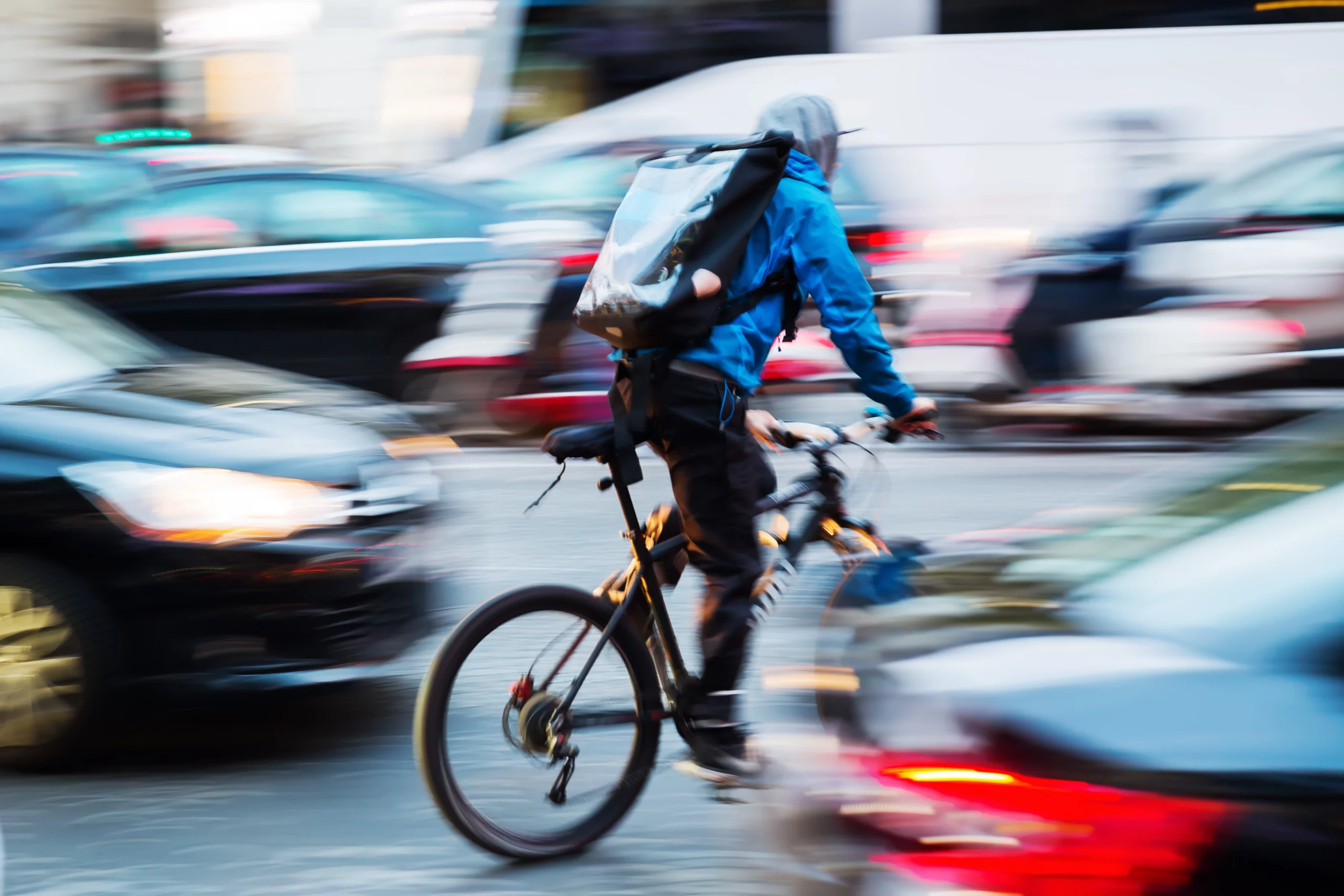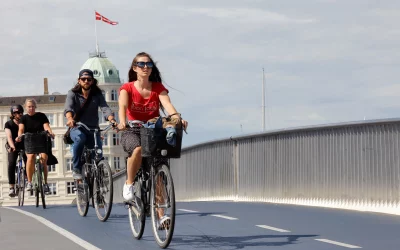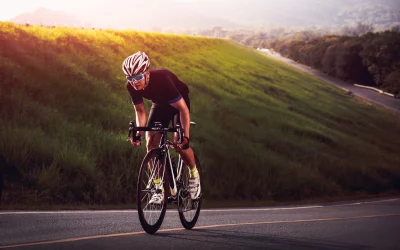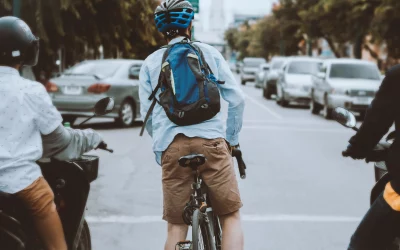Experienced Colorado Bicycle Accident Law Firm
Everyone is responsible for the safety of bicyclists.
Shawn Michael Grady, a Colorado Springs resident, was killed in May when his bicycle was hit by a pickup car when he was riding it on Rowan Road. According to authorities, the car left the site of the crash, but its driver subsequently surrendered to police in Colorado Springs.
As a result of Grady’s untimely death, Colorado motorists are again reminded how important it is for them to “share the road” with bicycles. National Highway Traffic Safety Administration (NHTSA) reports that Colorado has the unfortunate distinction of having the nation’s highest number of bicycle fatalities as well as the highest rate of bicycle fatalities per million population, according to a study released in 2015.
Here, we’ll go over some of the efforts drivers may take to help bring those numbers down, as well as some helpful advice for keeping bikers (and drivers) safe on Colorado roadways.
COMPLY WITH THE “THREE FOOT LAW.”
Drivers of any car overtaking or passing a bicycle are required by Colorado law to offer the bicycle at least a three-foot horizontal berth. The “Three Foot Law” is designed to safeguard both vehicles and bikes.
For starters, it helps to avoid car accidents like the one that claimed the life of Shawn Michael Grady. Second, it lessens the force of the potentially destabilizing wind, which may throw bikers off balance and cause them to collide with a moving car when they are near a car.
Motorists are forced to slow down behind bicycles on all except the broadest roadways, and they must wait until they are certain there is no oncoming traffic. It is safe to pass before proceeding (within the three-foot margin mentioned earlier).
Let’s take a closer look at the last part of the “Three Foot Law” in more depth. Colorado’s two-lane highways and residential roads are often too narrow to accommodate both a motor car and a bicycle traveling in the same direction, maintaining at least three feet between them and without obstructing oncoming traffic.
A car or truck must at least partially cross the center line. At the same time, this is a common occurrence. It can be extremely dangerous for both bicyclists and motorists, especially when approaching blind curves or other features that make it difficult to see traffic coming from the opposite direction.
To negotiate this issue as a responsible motorist, it is necessary to slow down behind the bike until it is safe to pass. It is unnecessary to honk or do anything else that could surprise the bicycle; the bicyclist will be aware of your presence (or figure it out quickly).
When your vision of the road ahead is impeded by another bike, a responsible rider will do his or her bit by waving you past. When it is safe to pass, Colorado law requires you to always do so at a reasonable pace, regardless of the circumstances.
BE COURTEOUS IN ALL SITUATIONS.
Nobody enjoys being around jerks. Drivers who are aggressive, inattentive, or discourteous may, unfortunately, be responsible for major traffic accidents. Almost everyone who has cycled on public roads has heard tales of vehicles screaming, honking, or generally failing to share the road politely.
However, it is important to note that this kind of conduct is more than just plain unpleasant; it may also be considered reckless driving under Colorado law if it puts the life, limb, and property of the biker at risk.
A glass bottle was thrown from a car passing a bicycle; for example, it might badly harm or even kill a rider who is not paying attention. An insult, a yell, or an abrupt motion might catch a biker off guard, increasing the likelihood of a collision.
Common courtesy does more than just make driving on Colorado’s highways more pleasurable; it also helps to avert potentially fatal traffic collisions.
OPEN CAR DOORS WITH CAUTION AND BECOME PROFICIENT WITH THE “DUTCH REACH.”
Understandably, cyclists who ride through homes and on city streets are concerned about being “doored.” A poorly timed car door opening in front of a bicyclist might send the rider flying off his or her bike, resulting in fractured bones, brain injuries, or even death (let alone the property damage due to a destroyed bicycle).
The state of Colorado demands that you open your car door with caution at all times. Before opening the door to your car while parallel parking on a roadway where bicyclists may be cycling, check to see whether any bicycles are coming. Check your side and rearview mirrors before getting out of the car, and tell your passengers to do the same.
Or, better yet, teach yourself to use the “Dutch Reach,” which is the simple act of opening your car door with the hand that is farthest away from the door frame. The Dutch Reach, which forces you to reach over your chest to pull the door handle, places your body in such a way that it is simple to glance over your shoulder and see whether a bike (or another car or pedestrian) is coming.
According to research, the Dutch Reach helps decrease “doorings” and the injuries that result from them. In addition, using the same strategy to grab for your shoulder belt before pulling out into traffic will lower the likelihood of a car on bike accident.
KEEP AN EYE OUT FOR BLIND SPOTS.
For the most part, bicycles are visible only in the peripheral view of drivers while they are driving. The only thing a motorist may see of a bike at times is a brief glimpse of the bicyclist before slipping into their blind area on either side of the car when their mirror angle does not reach the rider.
Bicyclists should be aware of these blind zones and ensure that they maintain a safe distance for visibility while also moving out of blind regions as quickly as possible. By keeping a close eye on bikers as they move in and out of blind areas, drivers may compensate for their shortcomings.
RECOGNIZE THE IMPLICATIONS OF YOUR DECISIONS
The obligation to respect traffic regulations and operate their vehicles in a manner that keeps people safe falls on the shoulders of both drivers and cyclists. Although being concerned about the safety of your fellow Floridians is sufficient motivation to share the road, drivers should be aware that failure to adhere to the guidelines outlined above may result in significant legal penalties.
When a driver fails to yield to a bike and causes injury or death, the driver may face criminal punishment. Even if your carelessness does not result in a criminal conviction for a crime or felony, you may still be held civilly accountable for the cyclist’s medical bills, lost pay, and emotional distress.
Careless drivers may also be subject to punitive damages, which may amount to millions of dollars if a jury finds their actions to be sufficiently irresponsible.
Take it from the experts: no amount of time saved by rushing around a bicycle, driving recklessly, or failing to retain awareness of one’s surroundings by basic strategies such as the Dutch Reach is worth the potentially life-altering implications of doing so. Every Floridian has the right to arrive at
their destination safely and without accident, regardless of the mode of transportation, they use to get there.
BICYCLISTS SHOULD FOLLOW THESE SAFETY PRECAUTIONS
No matter how skilled you are as a biker, accidents may happen, and you might be thrown off your bike by an inattentive motorist. Whether or not you get a concussion or worse is entirely up to you.
The majority of bikers who died in accidents were not wearing helmets: 97 percent. The use of a helmet may lower the likelihood of suffering a brain injury in an accident by 85 percent.
VISIBILITY SHOULD BE IMPROVED
visibility is essential for such a tiny form of transportation that might be overlooked by a motorist traveling at a fast rate of speed. Visibility is particularly important at night when a disproportionately large number of bicycle accidents occur. Use flashing lights and bright colors to improve visibility. A colorful helmet doesn’t hurt either.
BE ALERT OF TRAFFIC
Because bikers are significantly more vulnerable than motorists, they should maintain an even higher awareness of traffic than driving. Most of the time, bicyclists should ride with the flow of traffic and avoid going against it as much as possible. Otherwise, the likelihood of an accident rises dramatically.
FOLLOW THE RULES OF THE ROAD
Just because you’re riding a bicycle doesn’t mean you have unfettered access to the roadway. Keep an eye out for any lights or signals exclusive to automobiles, such as red lights or emergency lights. Also, unless there is a route or lane specifically allocated for bicycles, avoid riding on the pavement.
Legal Counsel with Years of Experience Can Be Beneficial
Bicyclists and their families come to Warrior Bicycle Accident Lawyers, after being hurt in a bicycle accident. We defend them in court.
We are certain that our team of experienced personal injury lawyers can assist you in understanding and protecting your legal rights, as well as how to get the compensation you deserve in the event of a biking tragedy caused by a motorist’s failure to share the road with a cyclist.
If you would like to schedule a free consultation, please contact us on our website or phone at our Colorado Springs office 719-300-1100.







